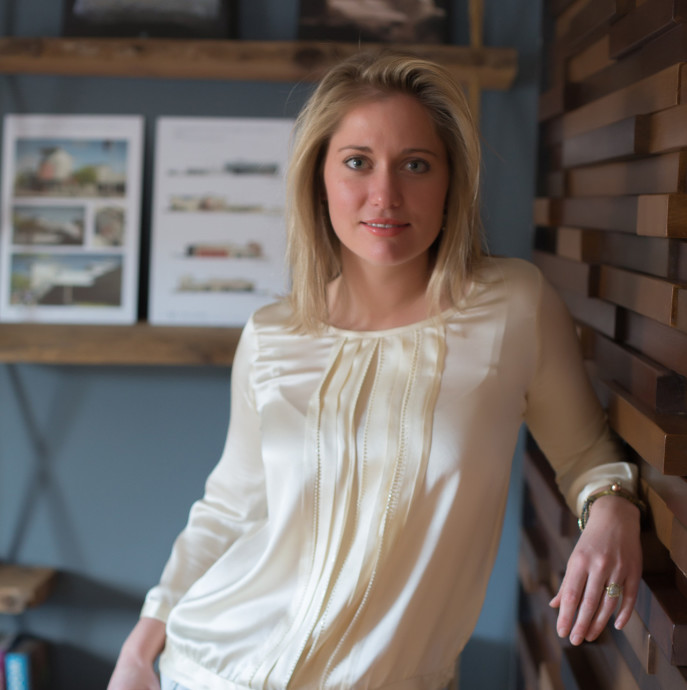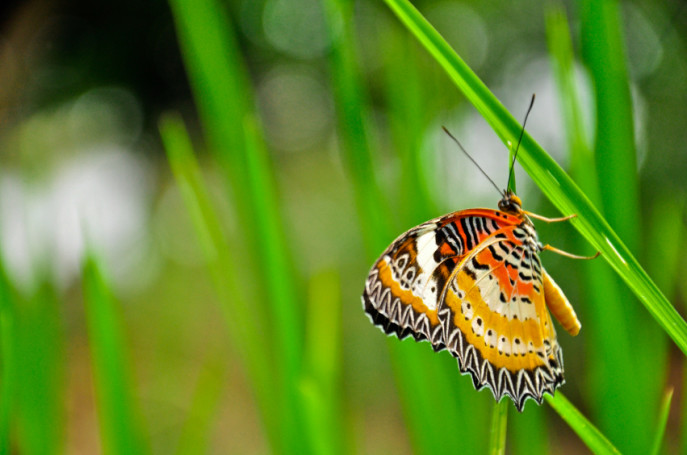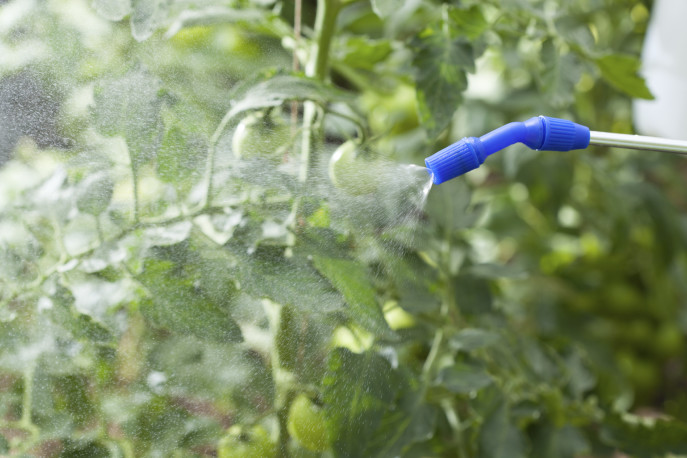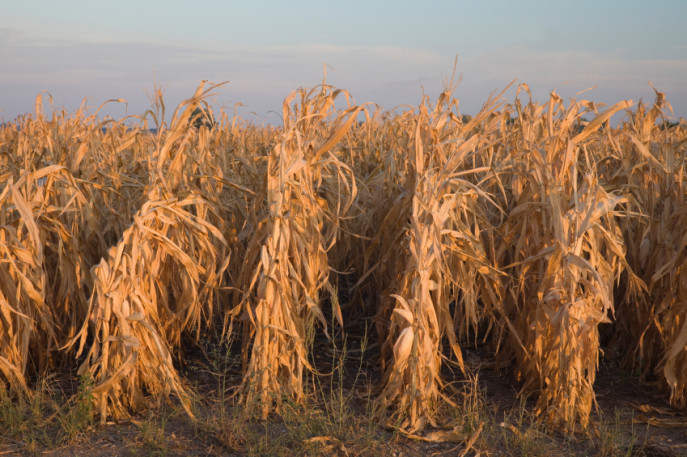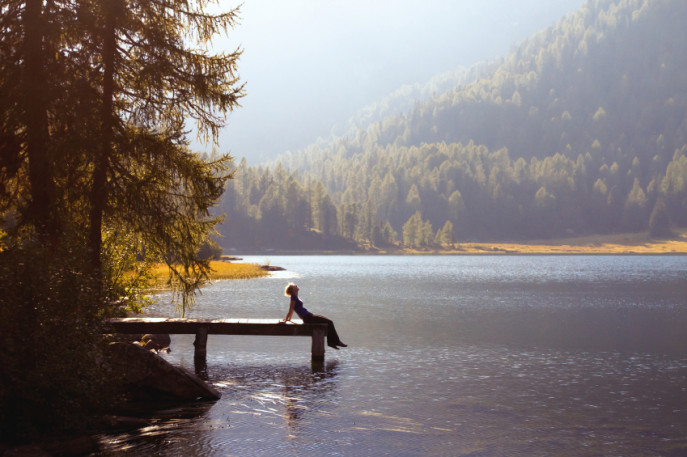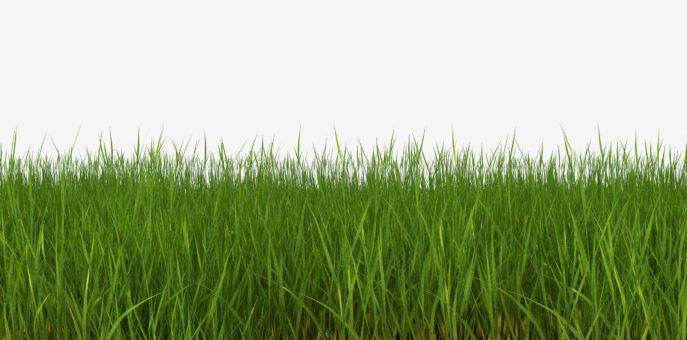
Many of us grew up playing on lawns years ago that were soft underfoot, cushioned our falls, and smelled delightfully grassy after mowing. They were different in several important ways from today’s lush green carpets, however. According to Chris Baliko, co-owner of Growing Solutions in Ridgefield, CT, they likely were a happy mixture of grass, crabgrass, dandelions, and clover. Perfect for their time, but less appreciated today.
People often prefer their lawns to be “golf course perfect,” a standard unheard of until marketing efforts from the chemical lawn care companies began to be widespread. “Before the 1940s to 1950s, the more clover you had in your lawn, the more prestigious looking your lawn was,” explains Chris. “Marketing helped to shift our perspective of what a beautiful lawn is.”
A lawn that is always richly green, without a weed in sight, is often the result of the frequent application of chemicals that present some environmental problems. Rain can cause nitrogen runoff into Long Island Sound and other waterways, encouraging algae bloom and seaweed growth. Algae and seaweed use up oxygen, killing fish.
Long Island Sound is an estuary, a mix of fresh and salt water, that is home to dozens of species of birds, 170 species of fish, and more than 1,200 species of invertebrates. Historically, it has supported fishing for lobster, oysters, blue crabs, scallops, striped bass, flounder, and blue fish. You can read more about the problem here.
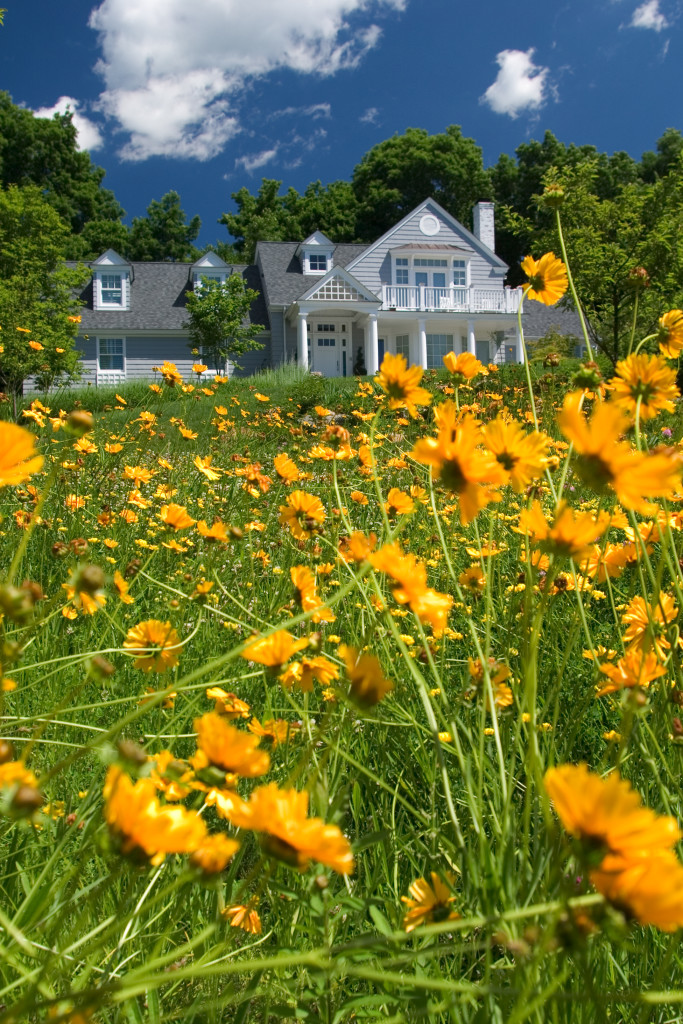
I believe that a healthy home should be surrounded by a healthy garden. Chris Baliko has helped keep my property a pristine, but beautiful, oasis. His organic program supports a healthy ecosystem with less reliance on potentially harmful chemicals, as seen in the photo of my house, above. Here are his tips for a healthy, organic lawn:
1.Get a soil test.
You need to know what’s going on in the soil from a chemistry standpoint, says Chris. A soil test will measure your soil pH, as well as the calcium/magnesium ratio, and the nutrient composition, taking the guesswork out of fixing any problems. One thing that Chris warns about is liming your soil every spring and fall, without being aware of the alkalinity/acidity levels. “One client was liming every year, and had a lawn so alkaline we had to add sulphur to rebalance it,” explains Chris.
2. It’s not just about fertilizers.
It’s not as simple as changing from synthetic fertilizers to organic ones. The soil also needs to be aerated, as compacted soil is not good for the grass root systems. Growing Solutions also recommends adding compost to build up the soil. “If you have good soil, you’ll have a healthy lawn,” says Chris.
3. Apply the right fertilizers.
Organic lawns companies are not supposed to put more than four pounds of nitrogen down for each 1,000 feet of lawn, although many commercial lawn care products have double or even triple that amount. That causes a lot of green growth on top, but a lot of that nitrogen goes to runoff, plus you have to mow more often. An organic fertilizer has 10% or less nitrogen content. The other nutrients provide the strong root system your lawn needs to look its best.
4. Set your mower blades a little higher.

Chris recommends grass to be cut at a height of 3-4 inches. That height doesn’t stress the lawn as much, and it keeps the soil a little more shaded from the sun. Crabgrass and weeds like hot, dry soil. Cool, shaded soil offers less opportunity for weeds to grow.
5. Rethink weed control.
Growing Solutions suggests using corn gluten products to control grab grass as a pre-emergent, as crab grass is the one of the only weeds Chris doesn’t find beneficial to the lawn. “My personal opinion about weeds is that they serve a purpose,” explains Chris. “Dandelions, for instance, have a deep tab root which helps to aerate the lawn, provides space for earthworms to travel, and acts as a conduit for other nutrients, bringing them up to a level where the grass roots can access them.”
In addition, dandelions are known to be the first food for bees in the spring, making them an important part of a thriving ecosystem.

Clover is also good, Chris says. “Clover takes nitrogen out of the air and delivers it to the soil in a usable form. Organic lawns are going to have weeds, perhaps 10-15% of the total lawn.” He emphasizes that we need to return to an earlier viewpoint of what a lawn should look like.
In addition, Growing Solutions brews their own “compost tea” and applies it to lawns to add essential micro-organisms. Although not a fungicide, it helps suppress fungal issues in the lawn.
6. Leave moss alone.
People often call to ask what can be done to remove moss, but Chris says the best thing to do is to keep it. It’s green all year round and doesn’t need fertilizing or mowing–the perfect compliment to grass!
7. Reduce the size of your lawn.

There’s nothing more high-maintenance than a lawn. Chris recommends creating more garden and planting beds, which helps to reduce runoff, offers food and shelter for birds and bees, and adds beauty to your property.
People love the look of a green expanse of grass, and it’s a delight for children to play on. There are ways to have a lawn and contribute to a healthy eco-system, too. It takes a little planning, and the right help.
You can reach Chris Baliko at Growing Solutions here, or search for an organic lawn care company in your area.






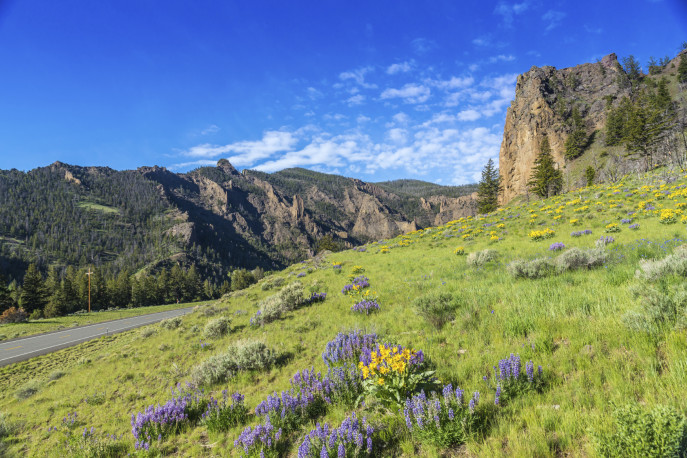
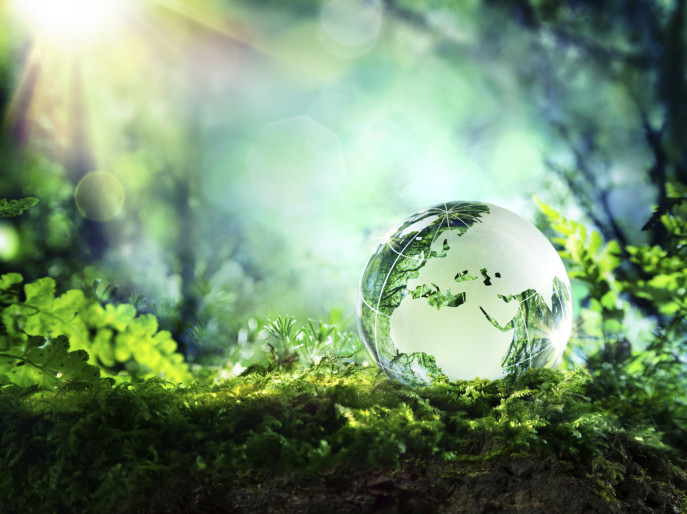
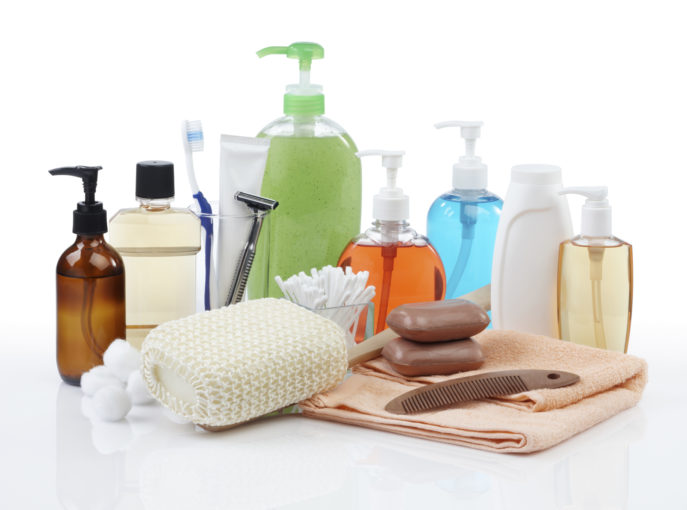
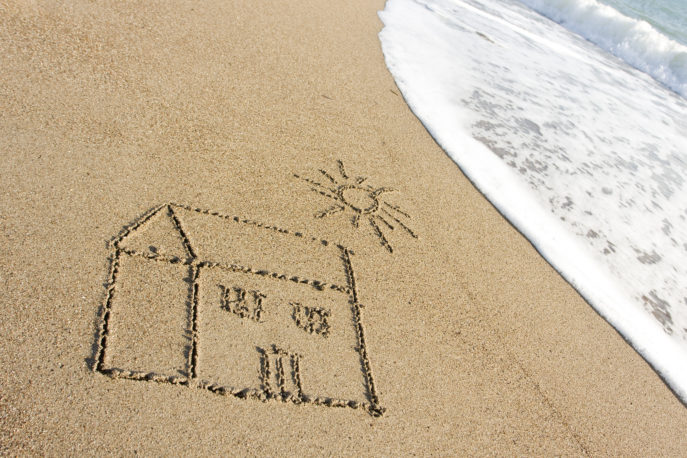
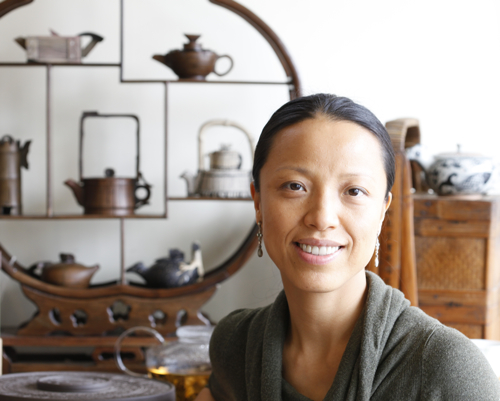
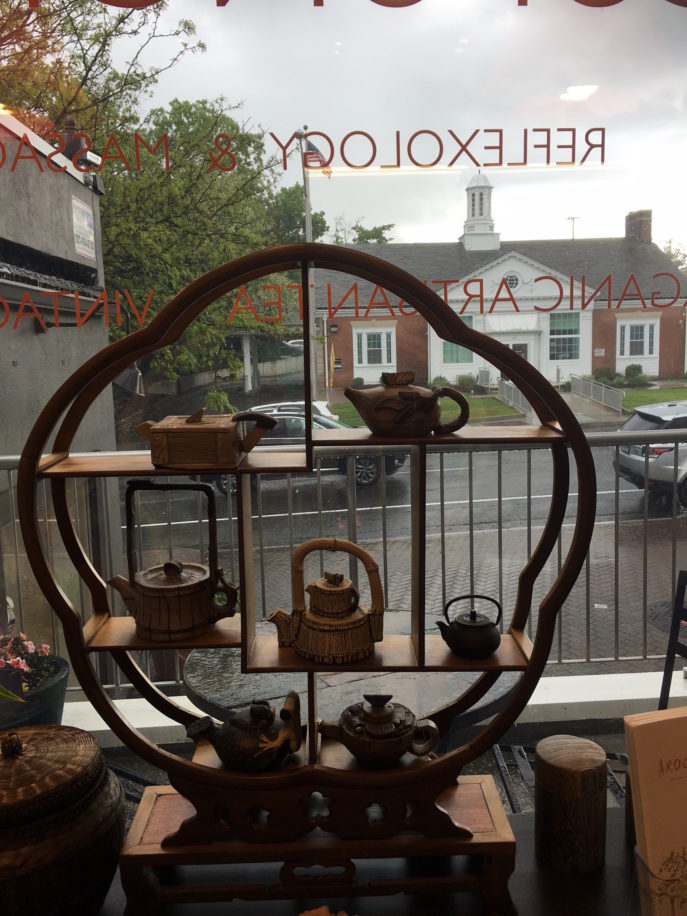

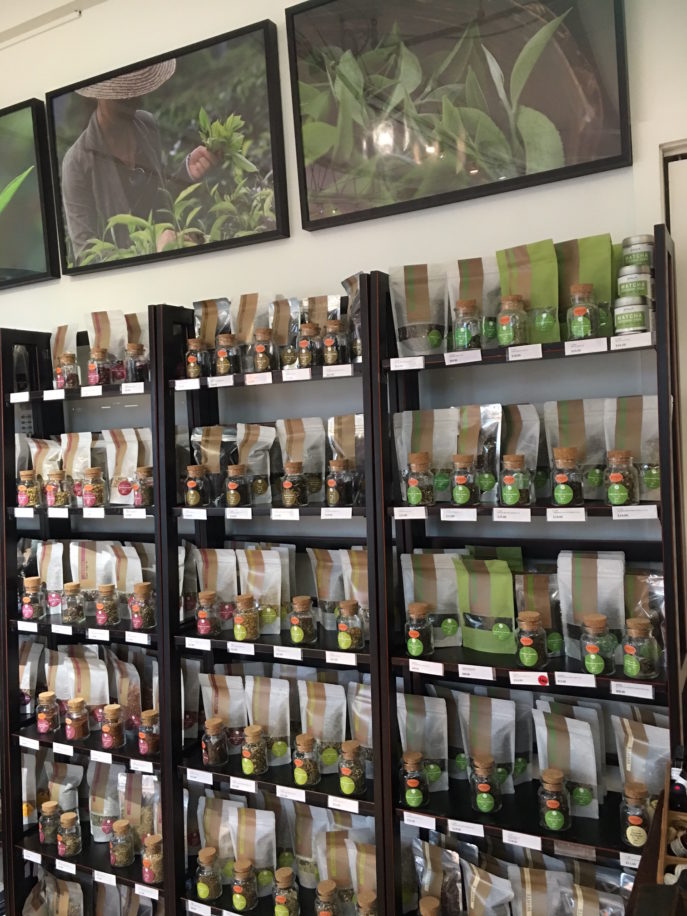

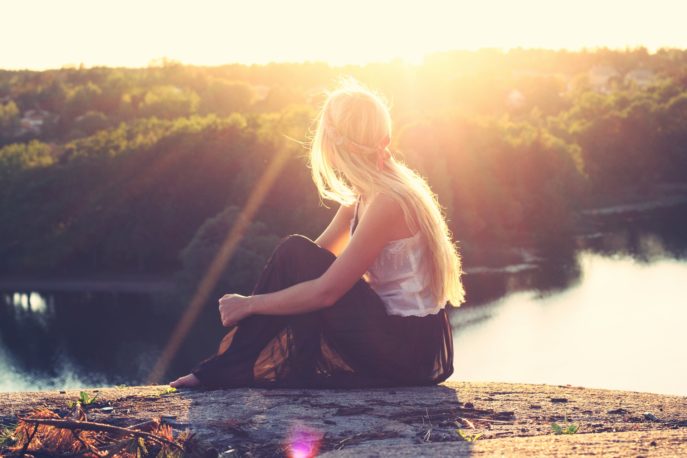
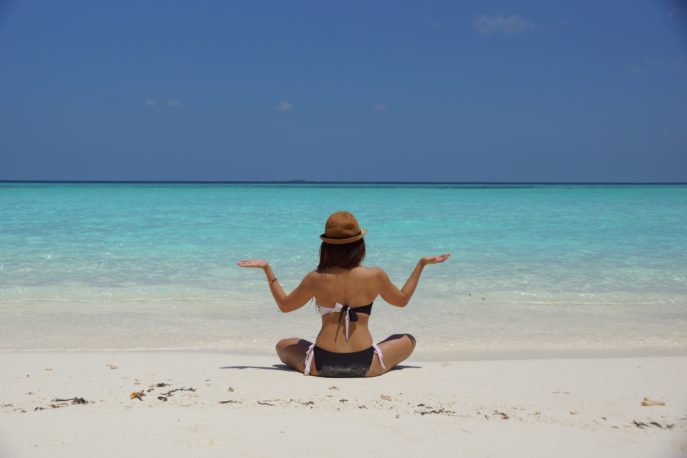
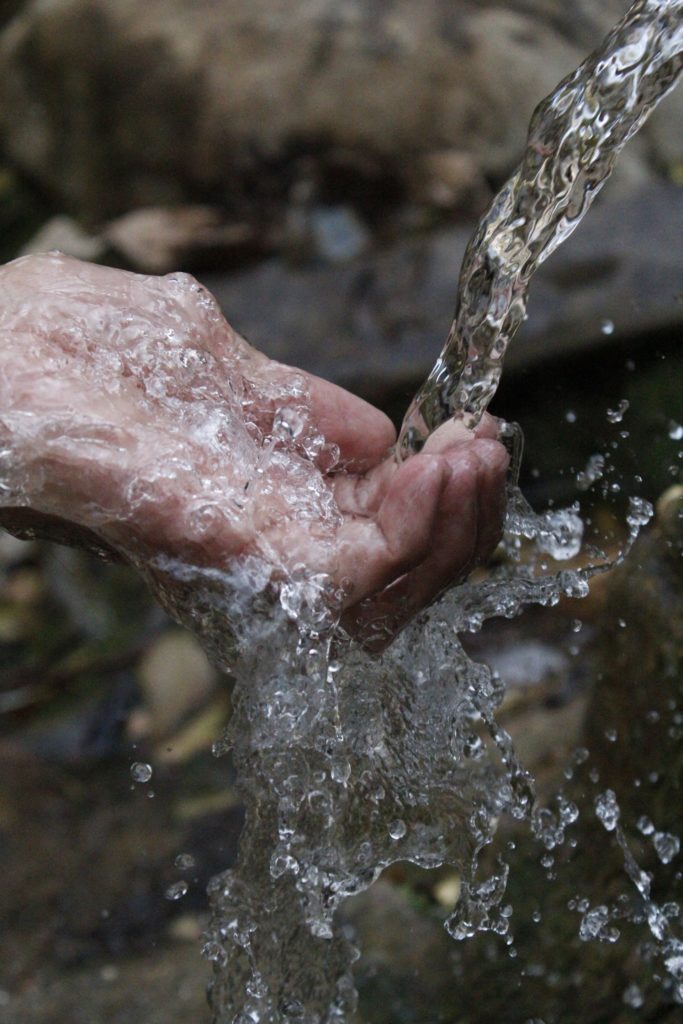
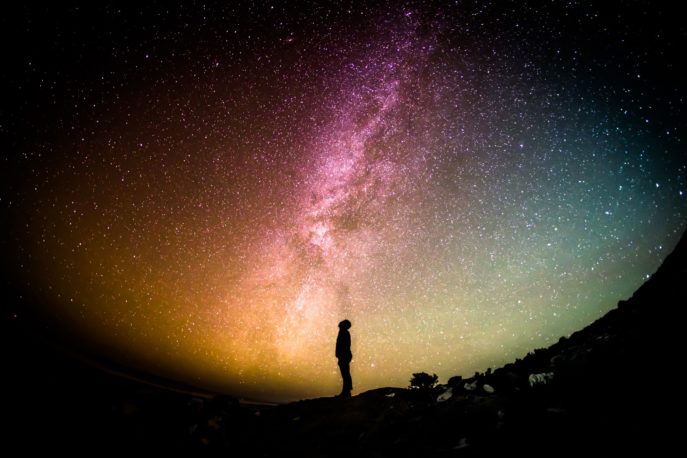
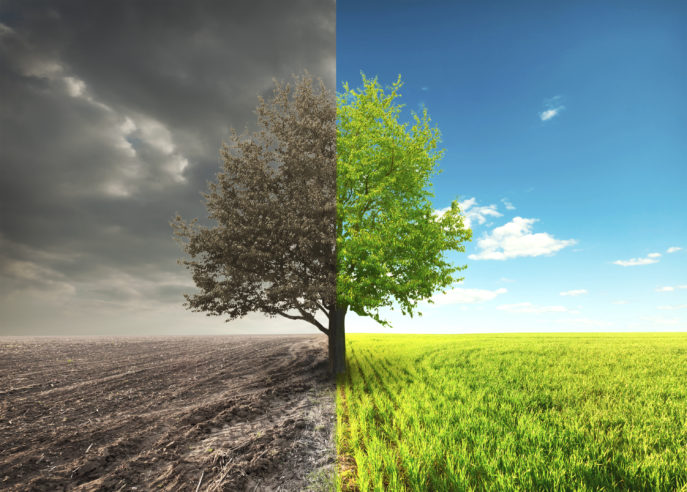
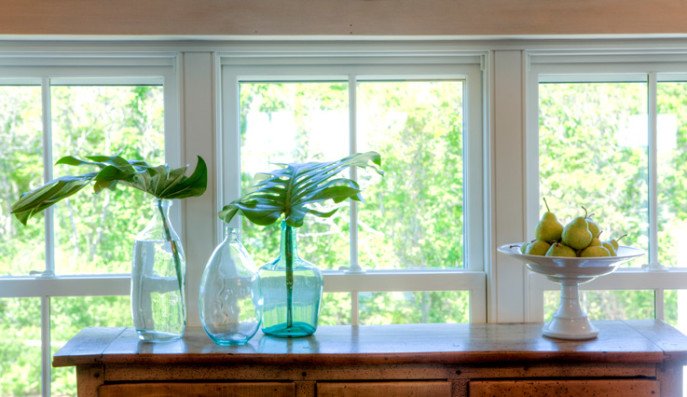



![Gulls on the side of the Seine [url=http://www.istockphoto.com/file_search.php?action=file&lightboxID=4328606][img]http://www.erichood.net/paris.jpg[/img][/url]](https://dujardindesign.com/wp-content/uploads/paris-river-seine-seagulls-687x457.jpg)
